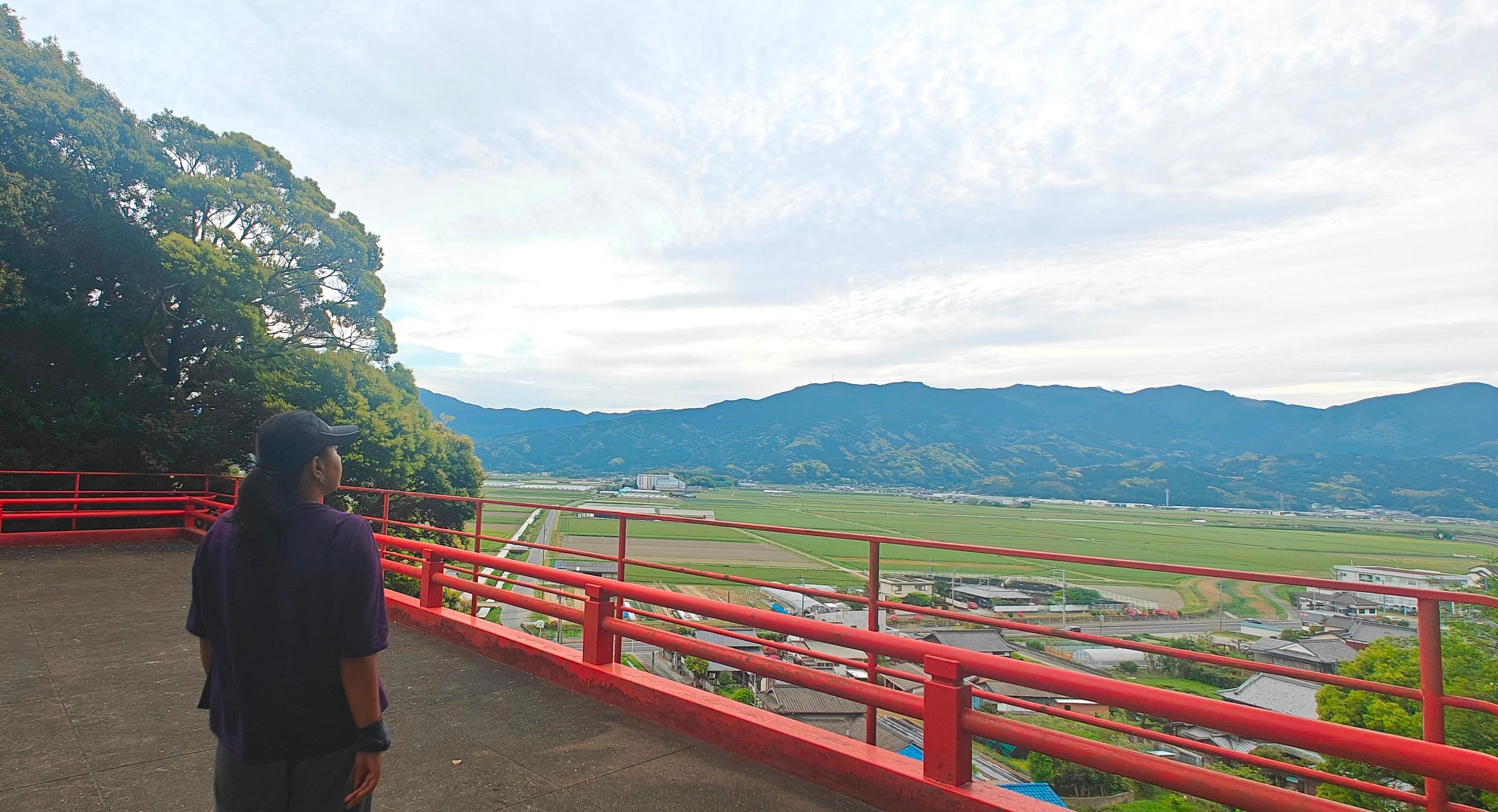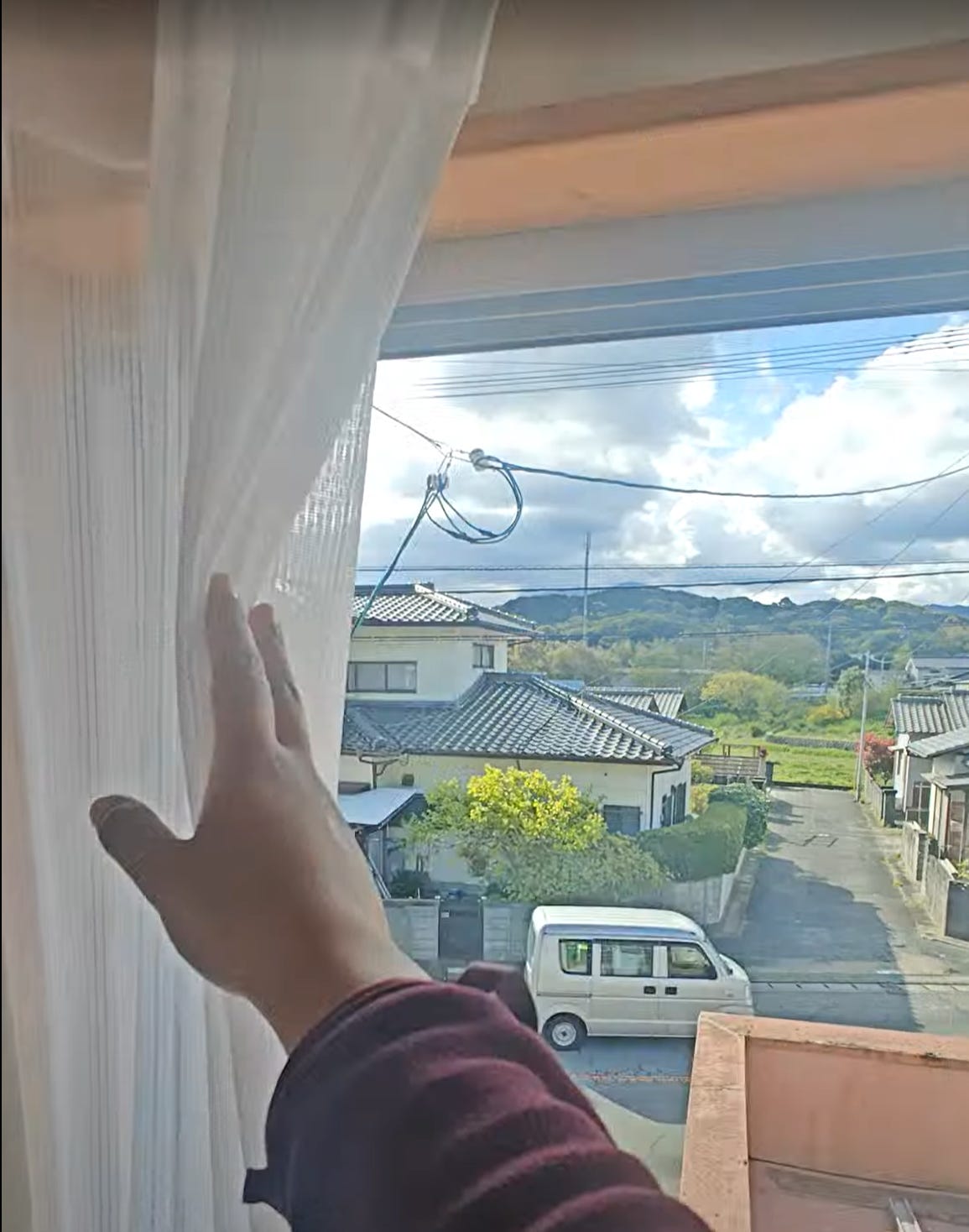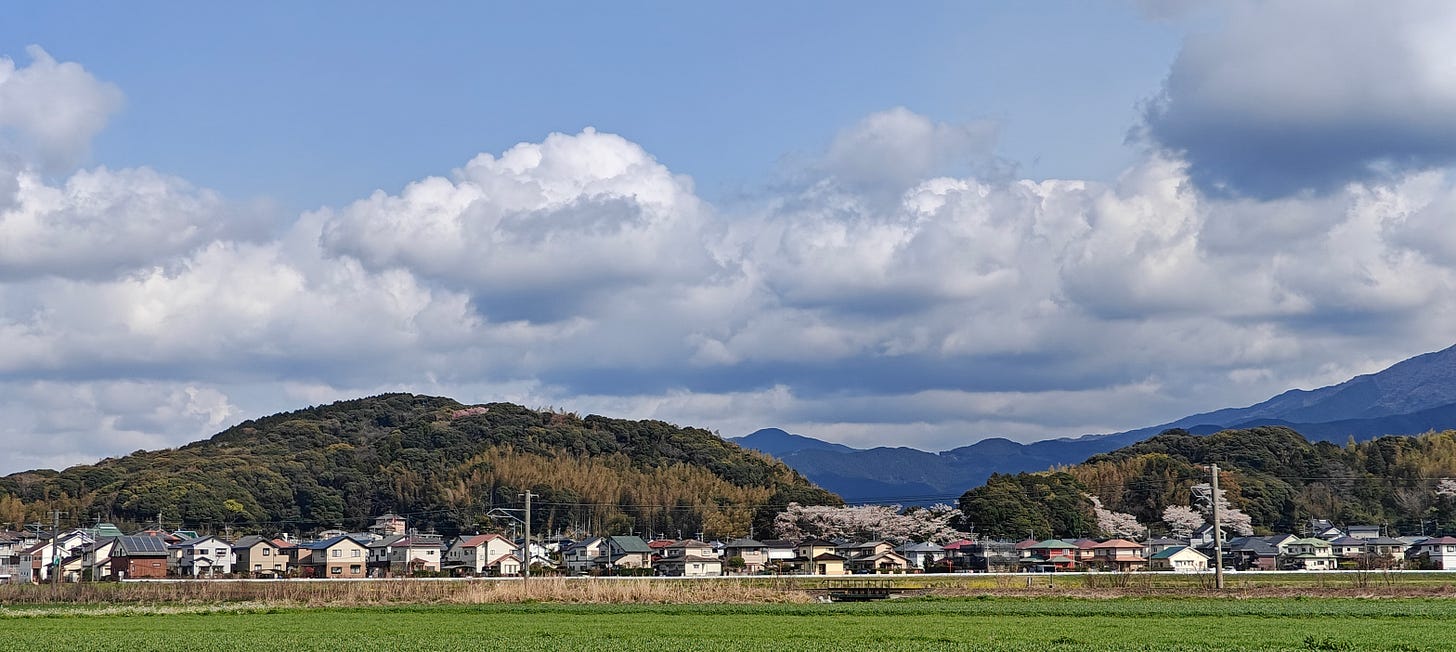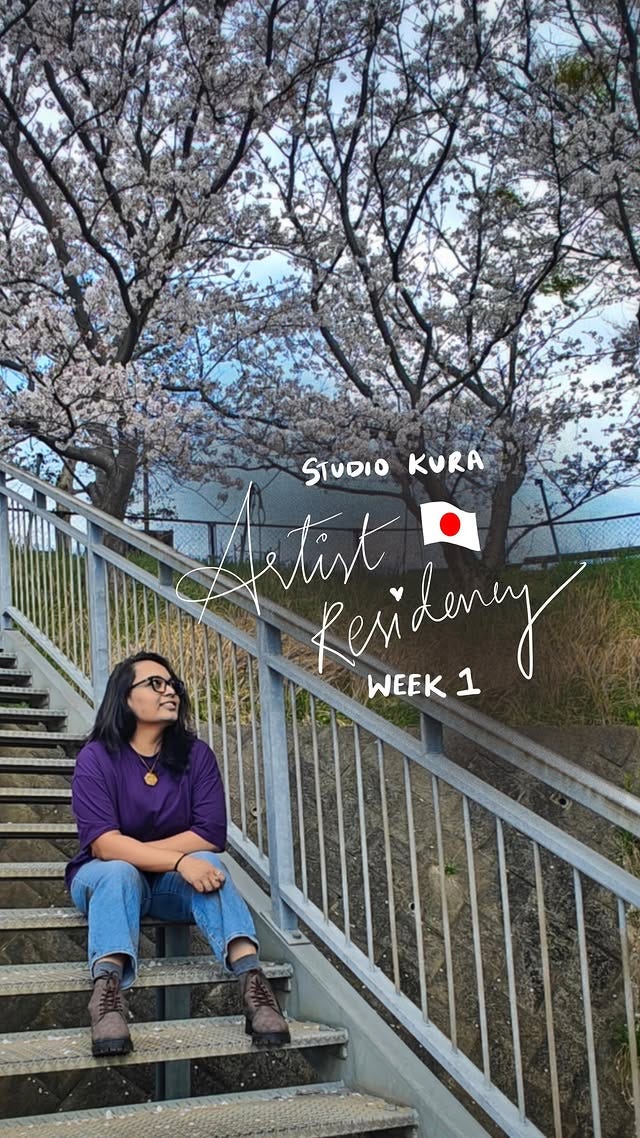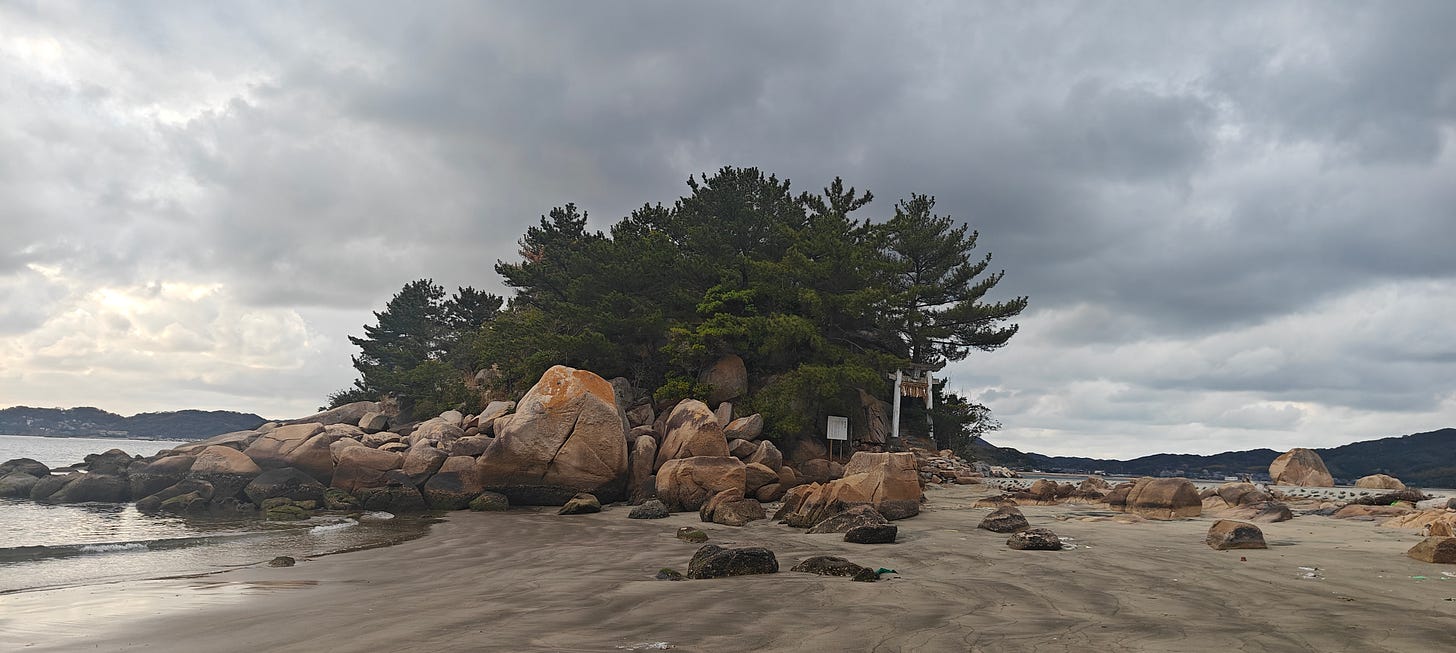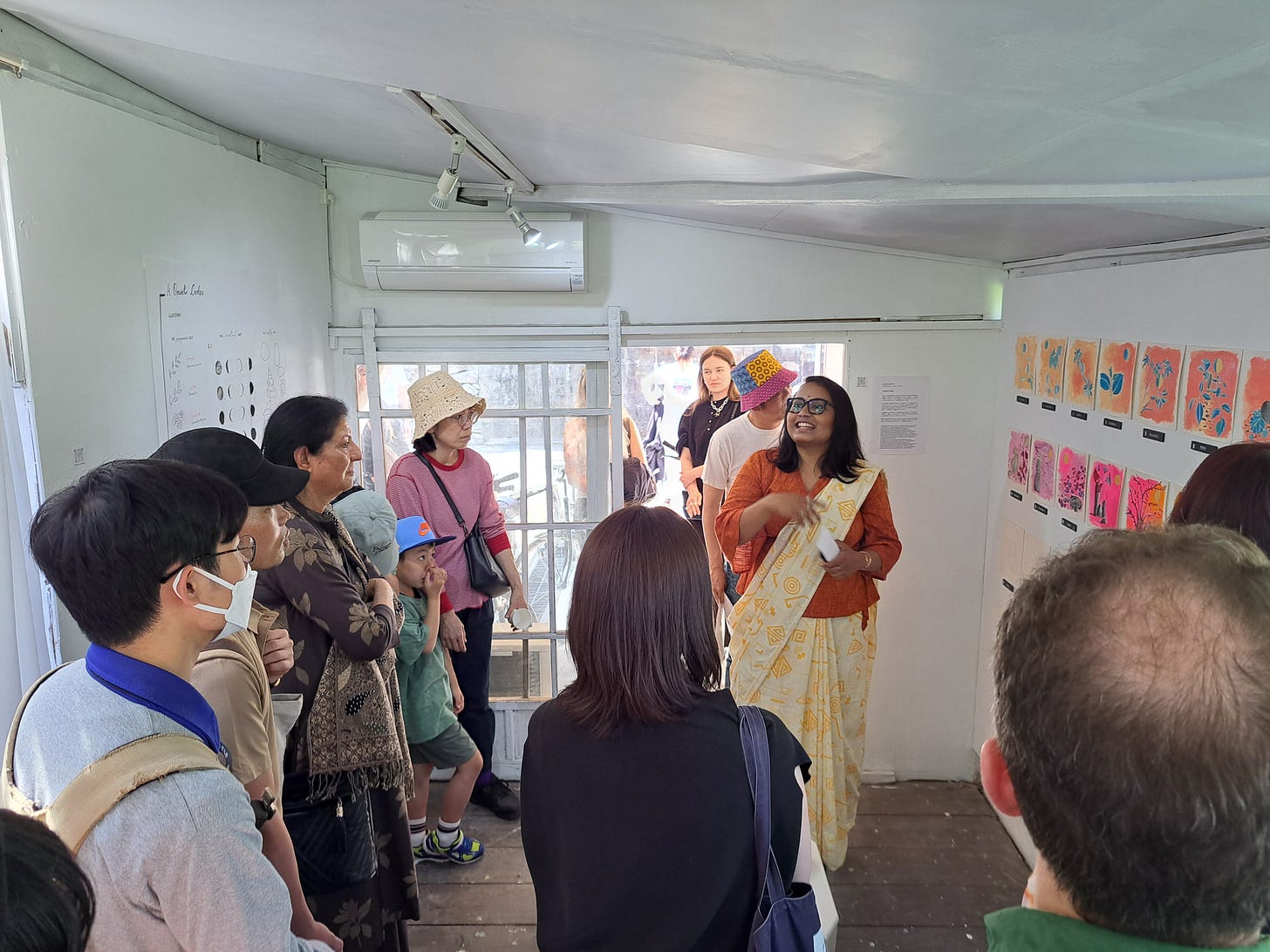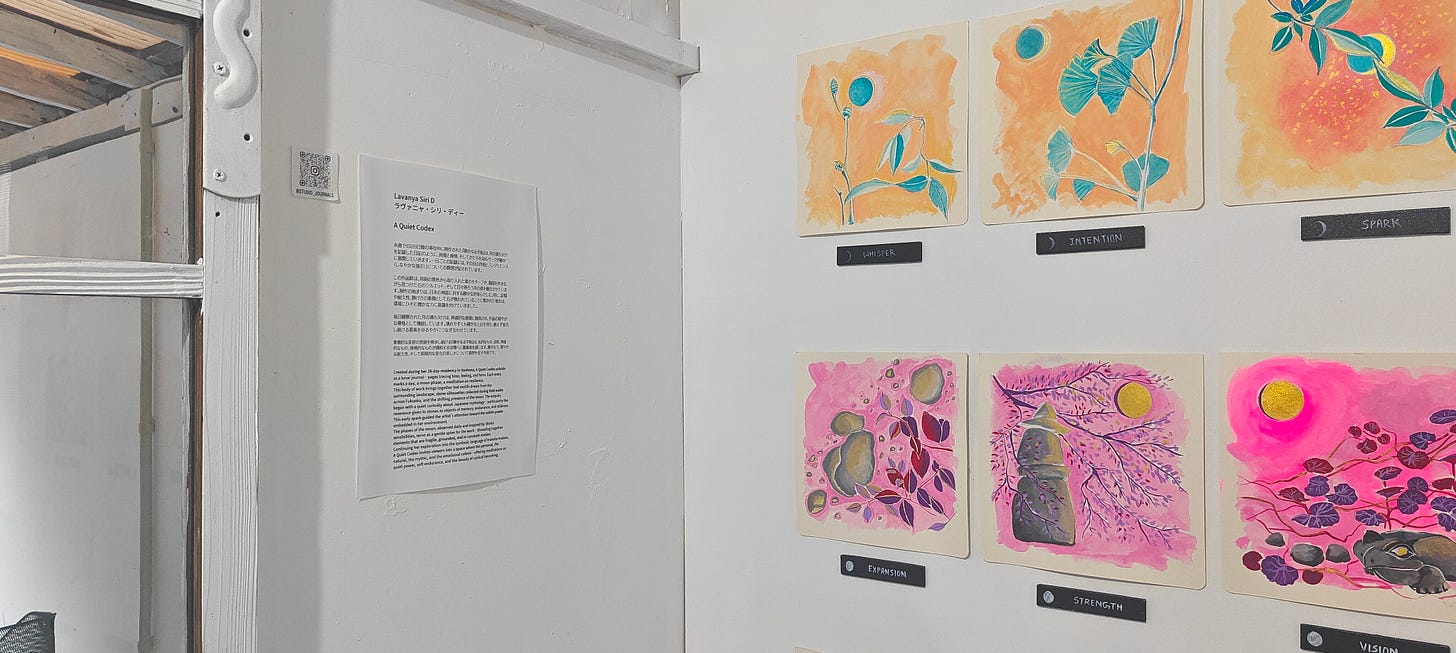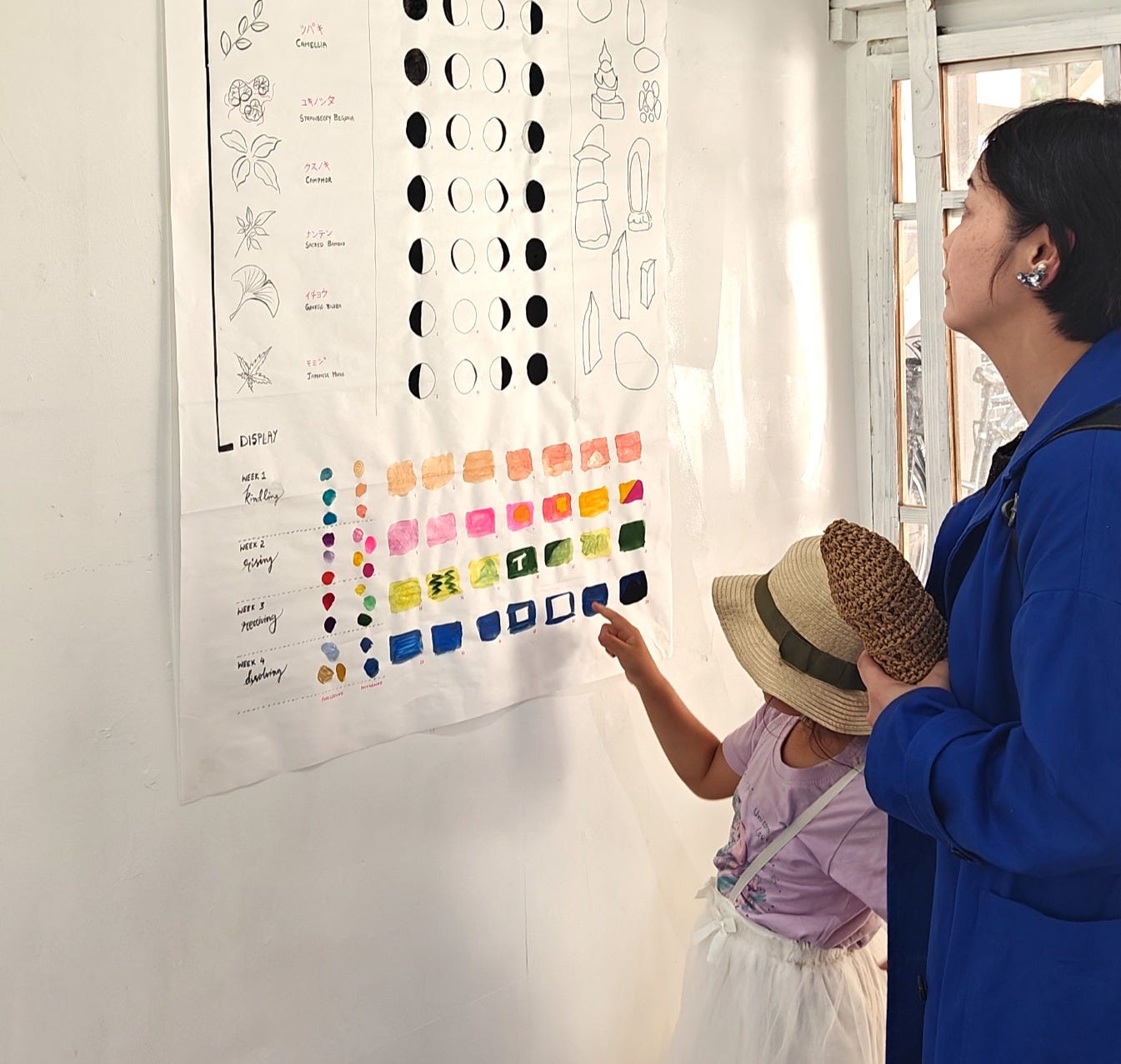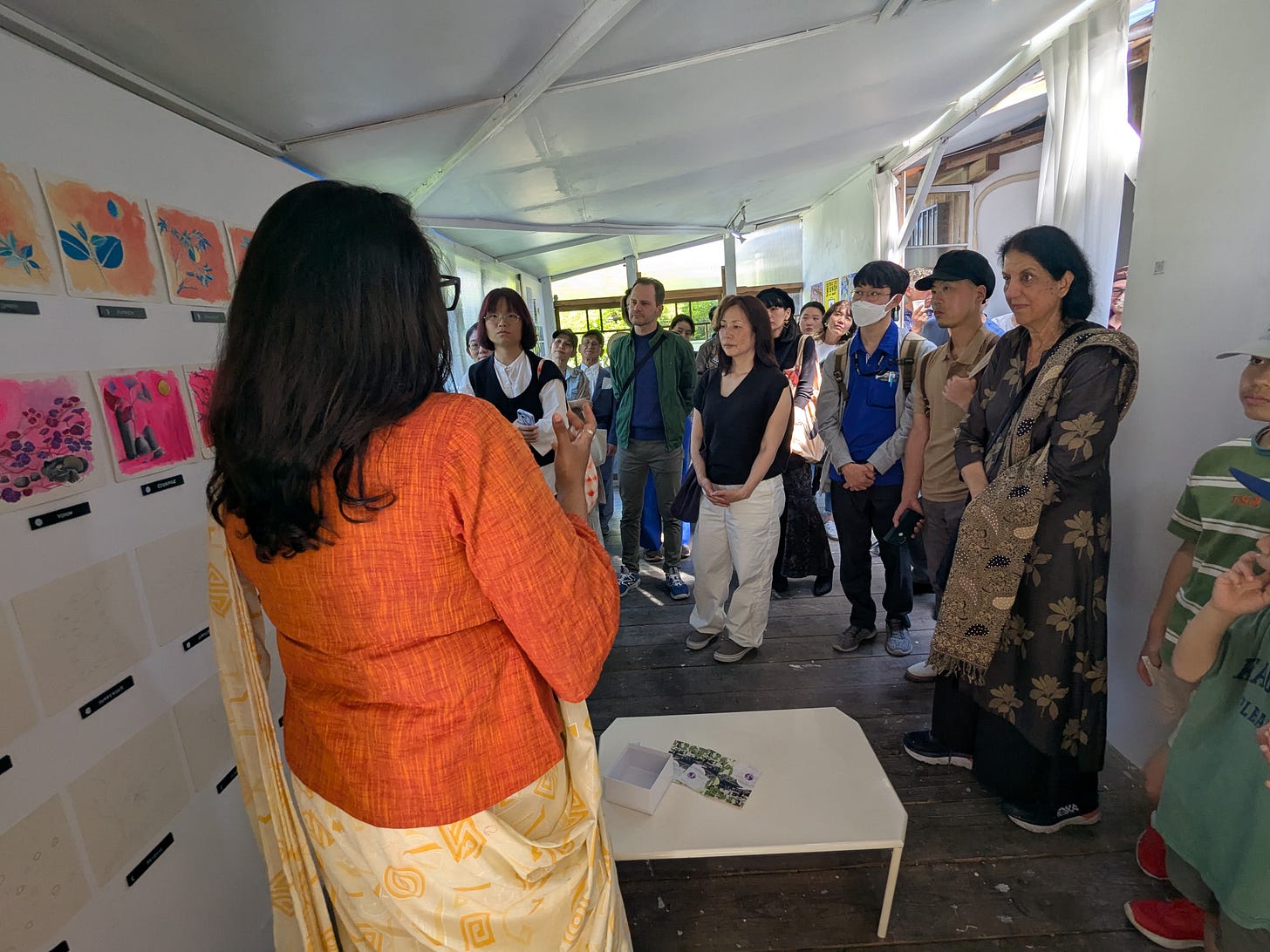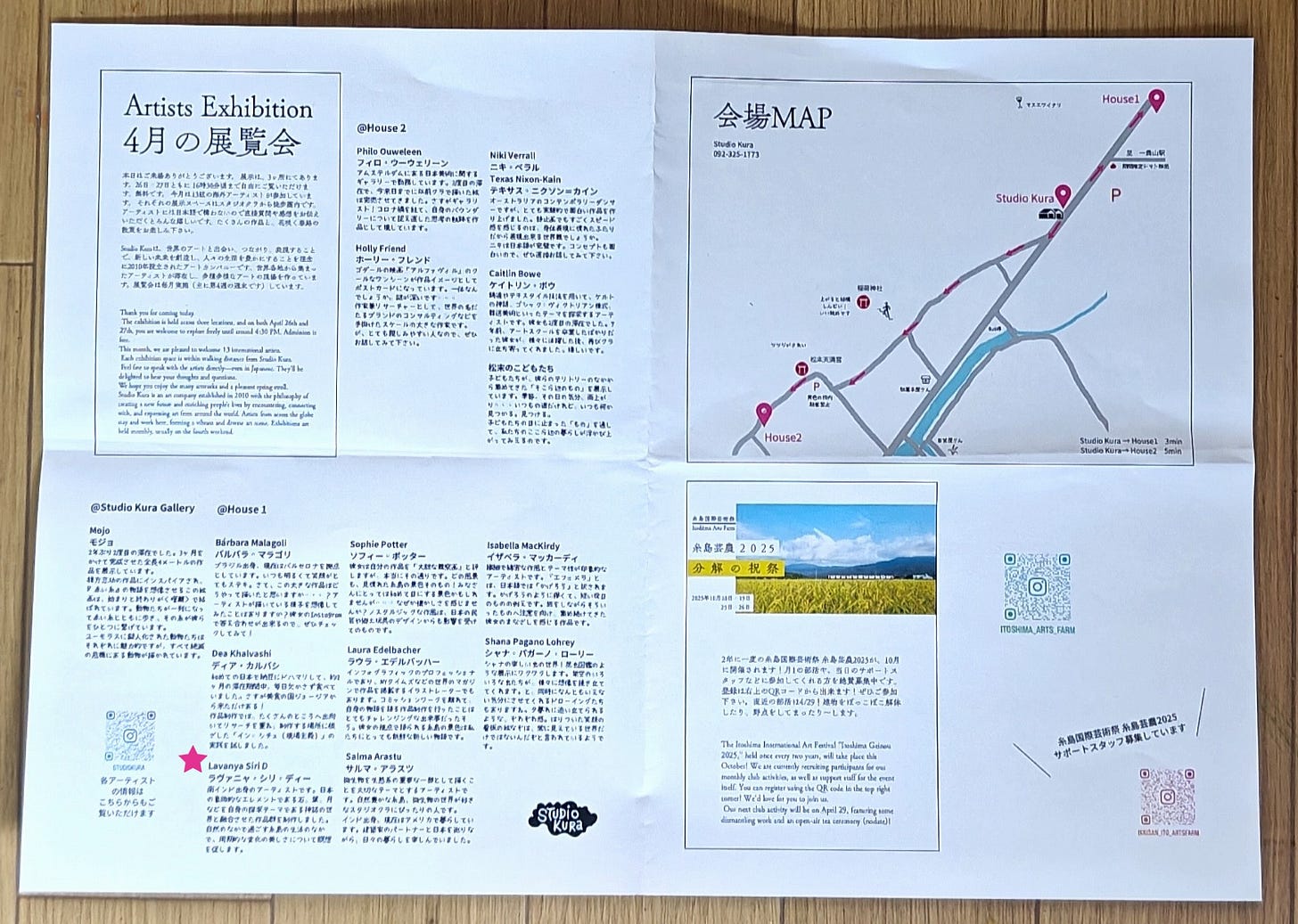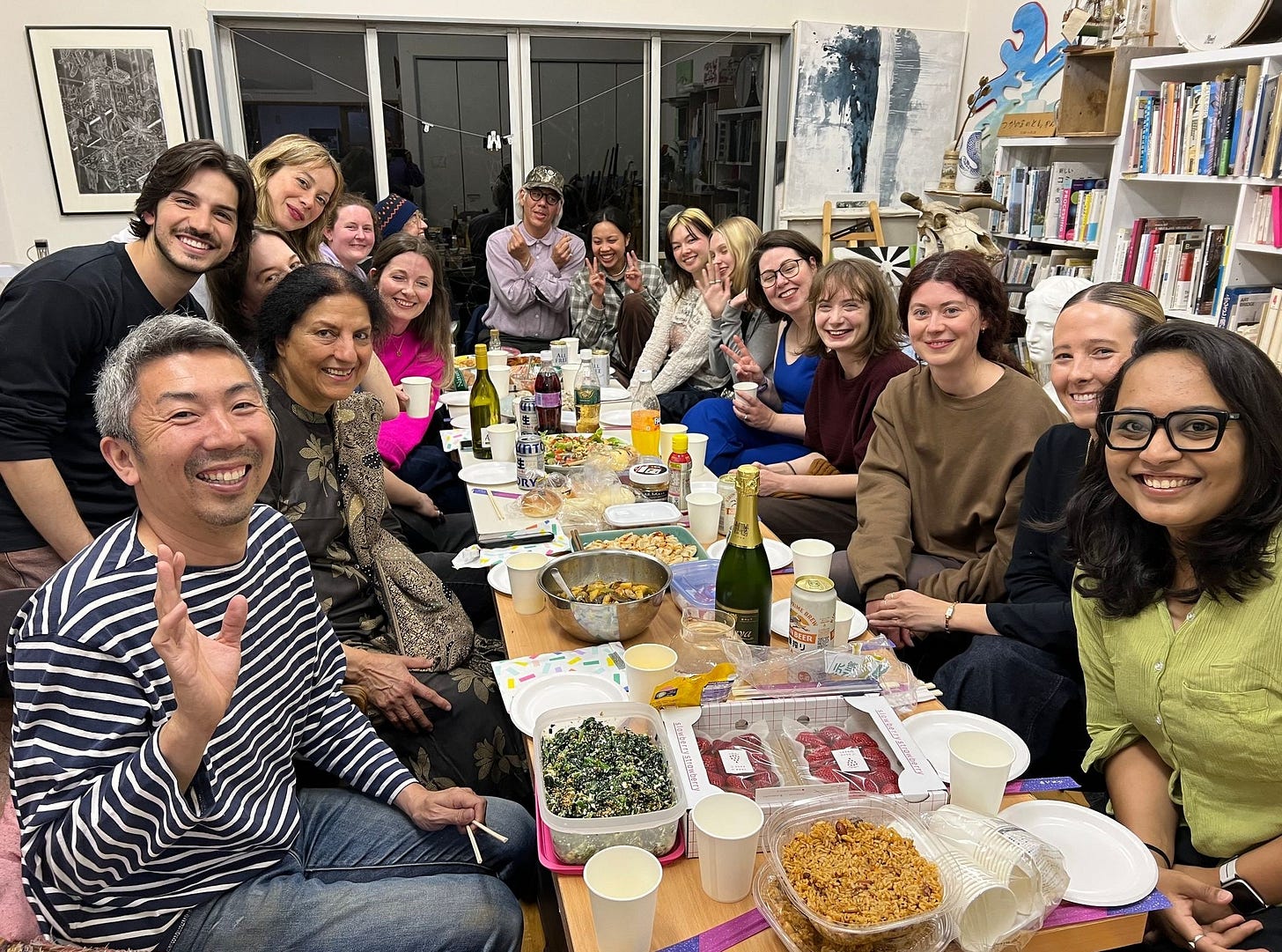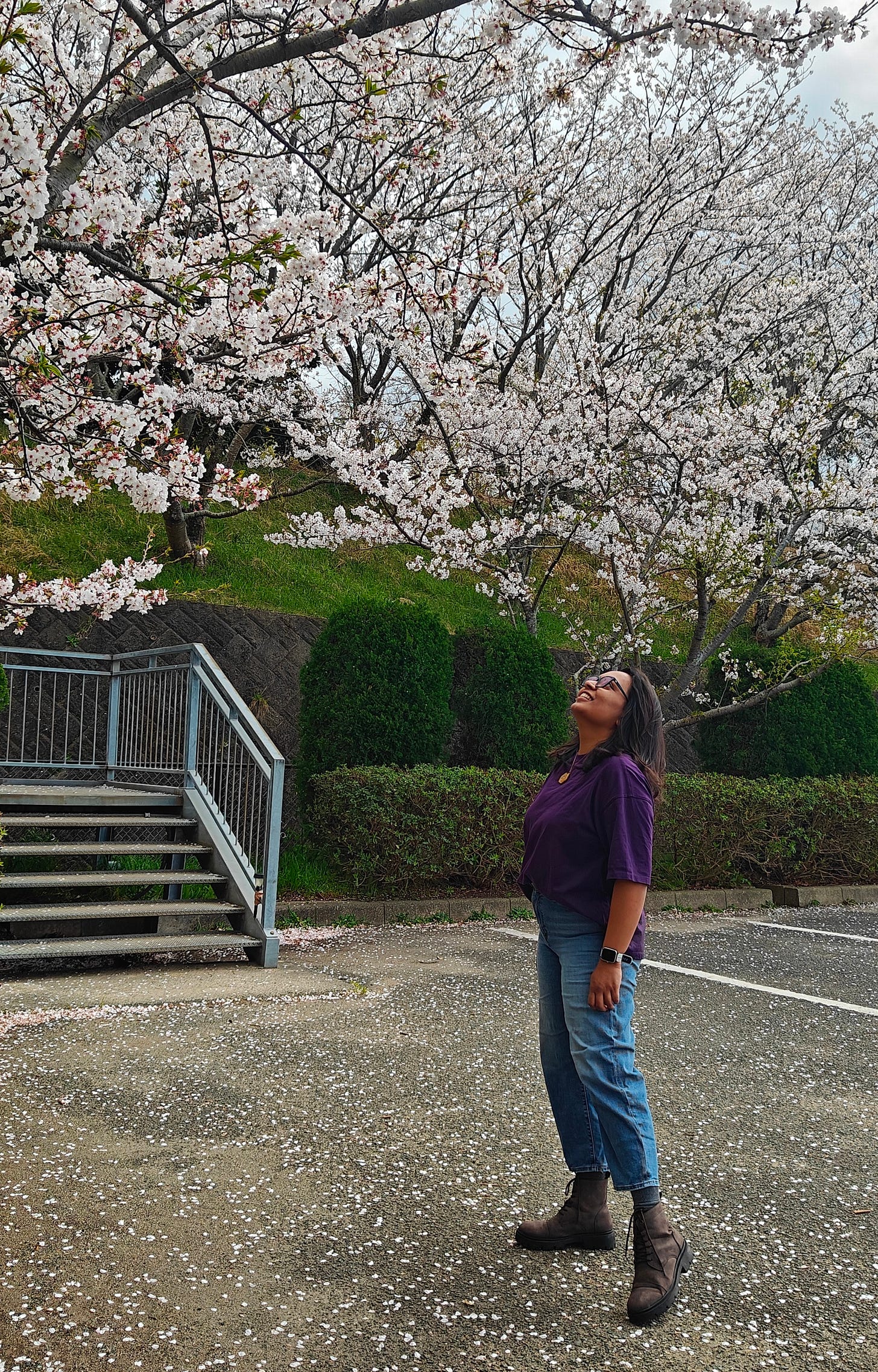In Search of a Quiet Flow
My Journey Through an Artist Residency in Rural Japan
A few years ago, I had come across a beautiful piece of Japanese prose which goes,
この世界は騒がしすぎるから
This world is too noisy,
聞かないで
so don't listen,
見ないで
don't look,
構わないで
Don't pay attention.
そして前に進め
Just move forward!
(author unknown)
Those lines, narrated over soft, chiming piano notes by a beautiful voice as background music to many viral short videos on social media, used to often instantly soothe me. Something about those clips had subconsciously sealed my expectations of what Japan might feel like, if I ever got lucky enough to visit.
My fascination with Japan is quite recent. I had always been an admirer of the country’s rich design heritage, from pottery and furniture to fashion and print. The real spark however, came when I glimpsed the possibility of experiencing Japan in a completely unique and immersive way.
One day in early May 2024, I accidentally stumbled upon Studio Kura’s Instagram page. Back then, I didn’t even know what artist residencies were. Discovering this vibrant community of artists from across the world gathering in a remote Japanese village to create and showcase art felt unreal. I kept scrolling through their page, stalking everyone’s work, and with every post, I grew more fascinated. There was something magical about how these artists came together, creating a shared creative world, while engaging with the local community. It was incredibly attractive.
At this point in my life, I was at a crossroads in my career. I had taken a break from my corporate job to explore possibilities at the intersection of academia and the design industry. I had just returned from a five-month stint at Amsterdam University of Applied Sciences and was craving something a little less structured, something more free-flowing.
I wasn’t sure if I would fit in with this exciting new world I was drawn to. I didn’t even have an “artist résumé.” I was an engineer turned designer turned researcher with experience mostly in the tech world. So, I dismissed the idea of applying to the residency, until one day I couldn’t resist any longer. I decided to put together a proposal anyway. After all, what’s the worst that could happen?
Crafting a proposal
Later in 2024, I decided to give this possibility a real shot. There were two strong motivations behind this pursuit. First, I wanted to experience Japan in a non-touristy way, not just for a rushed two-week trip, but something slower, deeper. Second (and perhaps the real reason), I just wanted to be around artists and bask in all their glory! (Haha, true story!) There’s something magnetic about people who are fully immersed in their creative worlds. It makes you want to believe in your own.
However, there was one thing that always made me hesitant about making travel plans to Japan. In August 2024, the country issued a major earthquake preparedness warning. It triggered a wave of anxiety in me. Looking back now, it feels like unnecessary worry, but at the time, the fear was real and intense.
Strangely enough, that fear ended up becoming my inspiration.
For my proposal, I decided to dive into the Japanese myth of Takemikazuchi, Namazu and Kaname Ishi (要石), an ancient Japanese folk tale that explains why Japan is so prone to earthquakes. And just like that, I found myself falling into yet another beautiful rabbit hole of cultural fascination.
Embracing the “Artist” label
I’ve been creating art since a very young age. I’ve often received appreciation and encouragement from family, friends and teachers for my artistic side. And yet, I’ve always hesitated to confidently call myself an “artist.”
Maybe it was a strange form of imposter syndrome.
Maybe it was because art wasn’t my official job.
Maybe it was because I wasn’t producing a consistent number of works every year.
Don’t get me wrong. I’ve always believed in the power of creativity, in everyone. One of my favorite quotes is by Eric Gill:
“The artist is not a different kind of person, but every person is a different kind of artist.”
Despite this belief, there was still some hesitation. I suppose that’s just how I’ve been conditioned to think. Applying for this residency felt like a small but meaningful step toward changing that and gently rewiring my thinking and starting to claim the artist in me.
Since late 2020, I’ve been dedicating nearly all my free time outside of my 9-to-5 to educating myself about the art world, how it functions, how artists navigate it, and where I might find my place within it.
In my own art practice, I’ve been increasingly drawn to myths and symbols, not just to understand them, but to reinterpret and reimagine them through fresh, personal narratives. This time, I felt a pull to step outside the boundaries of my own cultural heritage and explore stories rooted in another context.
That’s what led me to the stories surrounding stones (石 / ishi) and how they subtly weave themselves into everyday life, beliefs, and landscapes. I wanted to begin with the legend of the Kaname Ishi, the sacred “keystone” worshipped at Kashima Jingu in Ibaraki. It’s said that this stone pins down the wild catfish Namazu, believed to thrash beneath the earth and cause earthquakes. This stone keeps the catfish still and the land safe.
Fascinating, isn’t it?
Stepping into the quiet flow
Arriving in Ikisan felt like stepping into a dream and I promise that’s not an exaggeration. This was my first time in Japan. The moment I dragged my heavy luggage out of the Ghibli-like, red vintage-looking train and onto the station platform on a chilly spring morning, I was greeted by freshly blooming Sakura trees. It quite literally took my breath away.
And yes! I got to be there in April, of all months. I got lucky!
Thank you Studio Kura!🌸
The next four weeks unfolded in the most beautiful, organic way. If I were to get into all the details, I could easily fill up five articles — at the least!
There was a rhythm to the days that felt almost sacred. Mornings began with birdsong and sunlight filtering through paper-thin curtains.
Afternoons melted into long, unhurried cycle rides through rice fields, visiting new shrines every day, watching sunsets on the beach every other day, slow walks through the forest trails, where even the smallest rock or leaf seemed to hold a story. Evenings were often spent in stillness. Painting, writing, or just sitting with a warm bowl of whatever new instant ramen I’d discovered that day at the nearest FamilyMart, and letting the slurps stretch into the silence.
There was no rush. No noise. No need to perform.
Only flow.
Taking it all in, weaving it all out!
As the days slipped by, I found myself in a constant state of quiet absorption. Watching, listening, sensing. The world around me was soft yet precise, simple yet layered. Every object, every gesture seemed intentional. It was as if the landscape itself was whispering stories and I was learning how to listen.
When I first arrived, my initial plan was to travel across Japan, especially to Ibaraki to see the legendary Kaname Ishi (stone) at the Kashima Shrine. That stone was central to the myth that had inspired my proposal. It felt important to witness it in person.
But, as the days flowed gently in Ikisan, something shifted. I began to feel a strong pull to stay rooted. Traveling far felt disruptive to the quiet rhythm I had started to fall in love with. So, I let go of the plan and in that letting go, something beautiful happened.
While exploring the forests near my residence, I came across the Kamiari Shrine and a fascinating spot that held the huge “God Stone” (Shinseki). Nestled quietly in the woods, with offerings left by visitors, it radiated a silent presence. Unlike the grandeur of a shrine monument, this stone felt intimate. Alive.
And just like that, my focus shifted. I no longer needed to chase distant symbols. I had found something equally interesting right where I was. A stone that felt sacred in its own way, deeply woven into the lives of the people and landscape around me.
From that point on, I started to see new possibilities in my art practice. It didn’t always have to be referencing mythology from afar. It could also be interpreting the sacredness of the here and now. A stone tucked under a bridge. A fallen leaf with five veins. A silent moonrise over terraced fields. These became my materials. My metaphors.
It felt less like doing and more like weaving. Threads of observation, memory, myth, and meaning coming together into something whole.
Collaborating with the ‘NOW’
One of the most profound shifts I experienced during the residency was understanding that creating art doesn’t have to begin with some grand, isolated act of genius. As Rick Rubin so beautifully puts it, “Nothing begins with us.”
The more time I spent in Ikisan, the more I could feel this truth settle. There’s something immensely humbling and freeing about this shift in perspective. You’re no longer forcing meaning or chasing a perfect outcome. You’re showing up, paying attention, and responding to what unfolds. The work becomes a dialogue, not a declaration.
Some days, the inspired part of me wanted to build something big and symbolic. Other days, the craftsperson in me just wanted to arrange leaves on paper until they felt just right. And then there were days when the only thing I could do was sit still, look out the window, or go for long strolls on the beach nearby, or be lost in endless online research about the stories and viewpoints on Shinto shrines and traditions.
I began to notice how my own “self” kept changing and responding to the weather, to a found object, to stories embedded in local experiences, to a memory from home. And I allowed all those versions of myself to participate in the work. Not just the confident one. Not just the one with the ideas, but also the one who felt unsure, or quiet, or deeply moved.
This phase of my process reminded me that creativity isn’t always a burst. Sometimes, it’s a gentle collaboration with the present moment. With what’s available. With what’s true right now.
A Quiet Codex : The Exhibition
Three weeks in, all the artists had started prepping for the final exhibition. The conversations now shifted from what we were exploring to how we were going to share it.
I now had a loosely formed idea of what I wanted my display to look like. I had given myself the constraint of 8-inch by 8-inch paper squares, and 28 of them, to mark each day of the lunar calendar. It was also symbolic of the 28 days (4 weeks) I got to spend at the residency.
As I continued tracing the moon’s shifting forms and collecting the varied stone silhouettes during my day trips around Fukuoka, I slowly became obsessed with the abundance of new leaves I kept encountering at the different shrines I visited. A beautiful triad began to take shape: the leaf, the stone, and the moon — each carrying its own language of time.
🍃 The leaf, delicate yet resilient, represented life in motion. Ever-growing, ever-falling, a mirror of breath and impermanence.
🪨 The stone offered a grounding counterpoint, solid, ancient, and enduring, a silent witness to the passage of time.
🌒 The moon, with its shifting forms, mirrored the ebb and flow of our inner world, a reminder that emotion, like the moon, moves in phases.
I chose these three elements because they echo something fundamental about the human experience, how we hold on, how we shift, how we let go. And so, each of the 28 paper squares became a container for that dialogue.
Each square was a meditation in attentive transformation. These weren’t just aesthetic compositions, but acts of listening, attempts to translate the present into symbols that hold meaning.
This series, now, is not just a visual diary. It’s a layered codex of inner and outer observations, stitched together across days marked by presence rather than productivity. And together, they formed The Quiet Codex, a personal symbolic record of what it meant to be fully present and porous in a land that felt both foreign and deeply familiar.
Echoes after the Quiet
Exhibiting my art for the very first time felt both surreal and grounding. To see the world I had built in my head over four weeks now standing in a room, visible, tangible, and open to others was a moment I’ll never forget.
What moved me most was hearing how people responded. The way they lingered, connected patterns, asked questions, and told me what certain pieces made them feel, that exchange was incredibly precious. It was as though my codex had become a mirror, reflecting not just my inner world, but something shared, something universal.
I felt seen. Not in a loud or performative way, but deeply, for the intention and emotion behind the work. That kind of appreciation was a balm. It reminded me why we create, not to impress, but to communicate something essential, something human.
And then there was the work of my fellow artists. To be surrounded by artists with such rich experiences and who are so committed to their own process, to witness the wildly diverse forms that creative expression can take was humbling and electrifying.
I was inspired not just by their finished pieces, but by their rituals, their skills, and their openness. There was so much I got to imbibe by just being around them, watching them be themselves.
In many ways, the exhibition was less of a conclusion and more of a convergence, of stories, styles, and sensibilities. In that gathering, I found new clarity, new courage, and a deeper reverence for the shared space art can hold.
Through this experience, I began to see myself more clearly.
In slowing down, observing, and creating, I started to recognize how deeply I valued pattern, clarity, and systems, not just in my art, but in how I think.
It was a revelation that my analytical side, the strategist and researcher in me, wasn’t separate from the artist. It was part of the same whole. Embracing my creative self helped me see the rest of me with more compassion and coherence.
What Comes Next...
I now realize I had been craving this experience not just as an escape, but as a necessary integration.
I needed to step away from the frameworks I was used to, so I could return with a deeper understanding of how all the parts of me belong together.
Since returning from the residency, I’ve found myself moving a little slower. Watching the world a little closer. I’m still processing all that the experience opened up, not just creatively, but personally.
I’ve begun turning my notes and sketches from Japan into a series of essays and mixed-media experiments. Some of them might evolve into new works or zines. Others might just remain private seeds. I’m waiting for the right season.
In the coming weeks, I’ll be sharing more photos and behind-the-scenes snippets from The Quiet Codex on my Instagram.
I’m also working on compiling a symbolic glossary of the leaves and rocks I used, more on that soon.
If you'd like to stay in the loop, please subscribe to my upcoming newsletter where I’ll share updates on new works, behind-the-scenes processes, and reflections as they unfold.
Until then, thank you for reading and for walking alongside me on this journey.
Till next time,
With warmth and awe,
Siri


